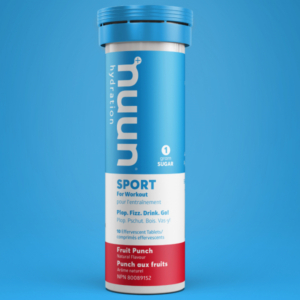The Ketogenic Diet and Emergency Preparedness
The ketogenic diet, commonly known as keto, has gained popularity for its potential health benefits, including weight loss and improved metabolic health. However, maintaining a keto diet during emergencies or natural disasters can be super challenging. In this article, we’ll explore what the ketogenic diet is, its key principles, and offer practical advice on how to be prepared for emergencies while following a keto diet.
Understanding the Ketogenic Diet
The ketogenic diet is a high-fat, low-carbohydrate eating plan designed to switch the body’s primary fuel source from carbohydrates to fats. The primary aim is to induce a state called ketosis, where the body produces and utilizes ketones for energy. The typical macronutrient breakdown on a keto diet is approximately 70-80% of daily calories from fat, 10-20% from protein, and less than 10% from carbohydrates.
Key Principles of the Ketogenic Diet:
- Low Carbohydrate Intake: The cornerstone of the keto diet is significantly reducing carbohydrate consumption to around 20-50 grams of net carbs per day.
- High Fat Intake: The majority of daily calories come from healthy fats, such as avocados, nuts, seeds, and oils.
- Moderate Protein: Protein intake is moderated to prevent excessive gluconeogenesis (the process by which the body converts protein into glucose).
- Ketosis: The goal is to reach and maintain a state of ketosis, where the liver produces ketones from fat stores for energy.
Emergency Preparedness for Keto – Dieters
Stock Up on Keto-Friendly Foods:
- Maintain a well-stocked pantry of non-perishable keto staples like canned fish (tuna and salmon), nut butter, olive oil, canned vegetables, and canned coconut milk.
- Consider keto-friendly snacks like nuts, seeds, pork rinds, and keto protein bars, or foods like this on our website. Here’s a short list of food choices:
- Hard-Boiled Eggs: A portable source of protein and healthy fats.

- Nuts and Seeds: Almonds, walnuts, pecans, and sunflower seeds are good options.
- Jerky: Look for sugar-free or low-carb options like beef jerky.
- Cheese: Pre-sliced or string cheese is easy to carry and high in fat.
- Nut Butter Packets: Almond or peanut butter packets are great for a quick energy boost.
- Pork Rinds: A crunchy, low-carb alternative to chips.
- Vegetable Sticks: Carry sliced cucumbers, bell peppers, or celery with dip or dressing.
- Berries: Small portions of berries like strawberries or raspberries are relatively low in carbs.
- Canned Tuna or Salmon: These are easy to open and eat with a fork.
- Hard-Boiled Eggs: A portable source of protein and healthy fats.
And Some More:
-
- Cherry Tomatoes: They’re small, convenient, and low in carbs.
- Olives: A small container of olives is a good source of healthy fats.
- Cottage Cheese: High in protein and relatively low in carbs.
- Keto Bars: There are various brands that make low-carb, high-fat bars specifically designed for keto dieters.
- Seaweed Snacks: These are a crunchy and low-carb option.
- Pickle Spears: Pickles are low in carbs and can be a tasty, crunchy snack.
- Cauliflower or Broccoli Florets: Easy to snack on with a dip.
- Low-Carb Wraps: Consider lettuce wraps or low-carb tortillas for a portable meal.
- Protein Shakes: Choose low-carb, high-fat protein shakes or make your own with keto-friendly ingredients.
- Coconut Chips: Look for unsweetened coconut chips for a crunchy, satisfying snack.
- Keto-Friendly Energy Bars: Some energy bars are formulated for low-carb diets.
Limit Sugar and Starchy Carbs:
- In emergency situations, avoid sugary and starchy foods and snacks, even if they are readily available. These can quickly knock you out of ketosis.
Hydration and Electrolytes:
- Stay well-hydrated by having an emergency supply of water and consider electrolyte supplements to maintain mineral balance. Opt for sugar-free electrolyte powders or tablets that align with keto principles.
Emergency Keto Meals:
- Invest in freeze-dried keto-friendly meals that can be prepared without electricity or refrigeration.
- Portable camping stoves and cookware can also help you prepare keto meals if necessary.
Plan for Fat Sources:
- Include sources of healthy fats in your emergency kit, such as nuts, nut butter, olive oil, and coconut oil. Many of these have shorter storage shelf lives – so be prepared to use and rotate.
Consider Keto Supplements:
- In emergency situations, it may be difficult to obtain all the essential nutrients required for keto. Consider keeping a supply of keto-specific supplements, such as MCT oil or exogenous ketones.
Learn to Read Labels:
- Familiarize yourself with reading food labels to identify hidden sugars and carbohydrates in packaged foods. This skill will help you make informed choices during emergencies.
The ketogenic diet can offer health benefits, but being prepared for emergencies as a keto dieter requires careful planning. By maintaining a keto-friendly emergency kit, limiting high-carb foods, ensuring proper hydration, and having keto-specific supplements, you can stay keto-savvy during challenging situations. Remember that knowledge, preparedness, and adaptability are essential for successfully navigating emergencies while following a ketogenic lifestyle! Happy eating!




